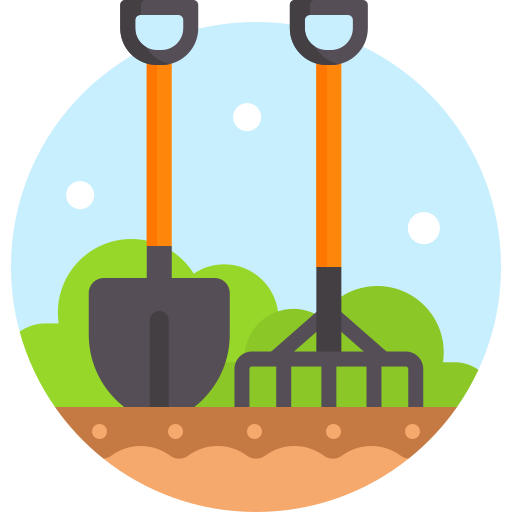I just got my hands on a small garden! But I have no idea where to start…
There are quite some plants already planted: an olive tree, some small palm trees (that I don’t like), a Japanese maple (?), a raspberry bush and some others I don’t recognize (mostly decorative). Most of the floor is lawn (that I am letting grow wilder). Unfortunately I am not able to include a photo, it’s not loading.
I am in a 9a/9b zone (I think: mild winters rarely if ever freezing, mild summers, quite wet the whole year, continental Europe).
My questions:
-
what can I do to maintain the lawn walkable but let it get more diverse?
-
what tools do I need for every-day maintenance of a small garden?
-
do you have any advice on plants both perennial and annual for newbies? I’m in particular interested in small plants that produce something edible. Ideally would like to start with a small apple tree? And a pumpkin/zucchini plant next year?
Palm trees can be dug up and gifted away, if done carefully.
If getting an apple tree, make sure it’s a “dwarf” or even “ultra dwarf” type depending on the size of your yard, or you won’t have a yard anymore, just a big ass tree.
I don’t know what’s native to your area, but for a walkable, wild lawn what works in my area, same zone in California, is self-heal (prunella vulgaris), wild violet (viola sororia), trefoil (Lotus corniculatus), with a micro clover base (trifolium repens). These all stay low, don’t mind a mow here and there, but don’t require it and are very lovely.
Because they are low growing, they won’t be able to compete with an overgrown grass lawn. Wilding the lawn isn’t really as simple as discontinuing mowing.
You can murder the lawn by cutting it short and covering with cardboard for about six months www.gardeningknowhow.com/lawn-care/kill-grass-with-cardboard Then plant what you want.
Or you can add the above mentioned plants and continue mowing as the shorties take over.
Know that pumpkins are not small plants- they will need about 50- 100 square feet per plant, but you can get mini varieties and grow them vertically, or a small “bush” variety. Zucchini is much more compact and manageable.
My biggest advice is to wait a year before you make any major changes. Things like how much sun an area gets will change throughout the year as the sun moves, or as nearby trees drop their leaves or grow them back.
As for specific plants, start by learning about what’s in your area that does well. Apps like iNaturalist are decent at helping identify plants (and bugs and animals) that you see both in nature and in other people’s gardens. You can then research those plants to see if they’re native to your area or not.
For tools, buy what you need when you need it. A shovel is good for planting new plants, but not as necessary for daily maintenance.
The lawn will be a similar process. See what pops up on its own. If you like it, research to see if it’s native or invasive.
Go to the local garden shop and talk to some of the customers there.
The shop won’t mind you hanging around if you are respectful, because they want to “grow*” a customer base.
The customers won’t mind if you are respectful. They know what works in the area best. Always go with local knowledge.
*No, I won’t apologize.
I‘m a lazy gardener in a comparative climate, I think. For the lawn: I use a motor scythe 2-5 times a year to keep my lawn from becoming a forest. That way you get a meadow with more diversity and living space for insects and small animals while it stays walkable.
Vegetables/fruit: If you combine pumpkin, corn and beans, those will not compete for nutrients, cover the ground and require less water because evaporation is lessened. Strawberries are also nice, because they’re tasty, spread quickly and also cover the ground. Having an apple tree is also a good idea, but dice I’ve inherited my trees from the former owners, I can’t provide you with knowledge how to care for a young tree. Bet there’s good content in the internet on pruning and such. You might want to select a kind that’s good for storage, because eventually you’ll get more than you can use at once.

